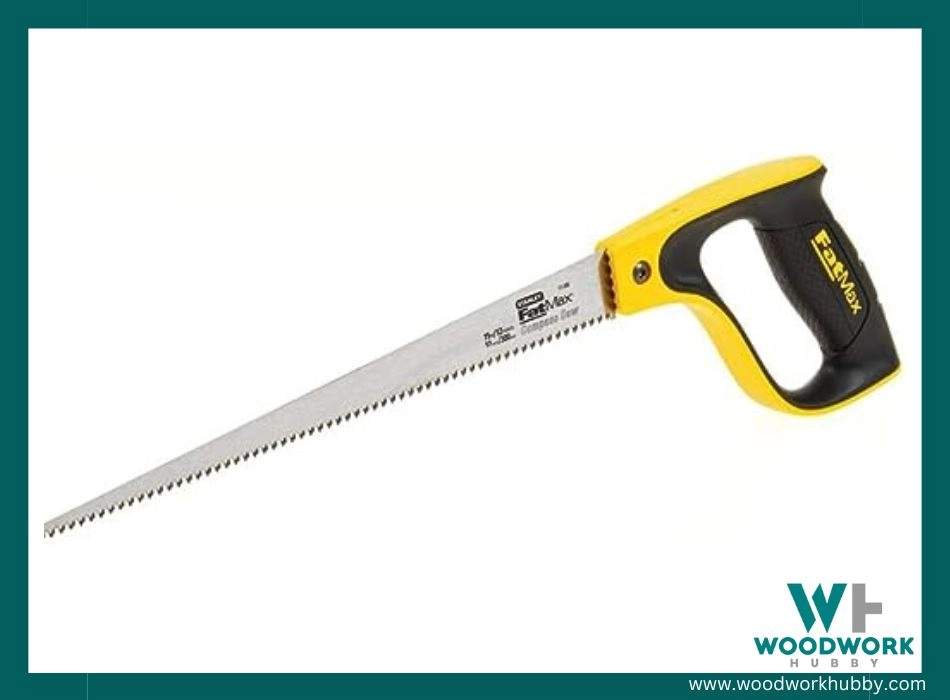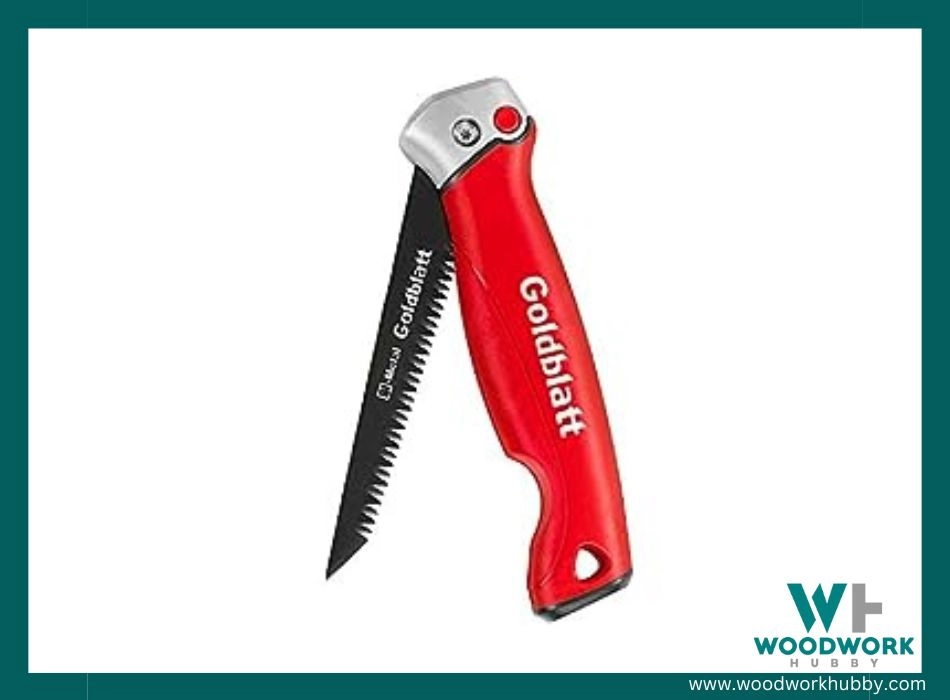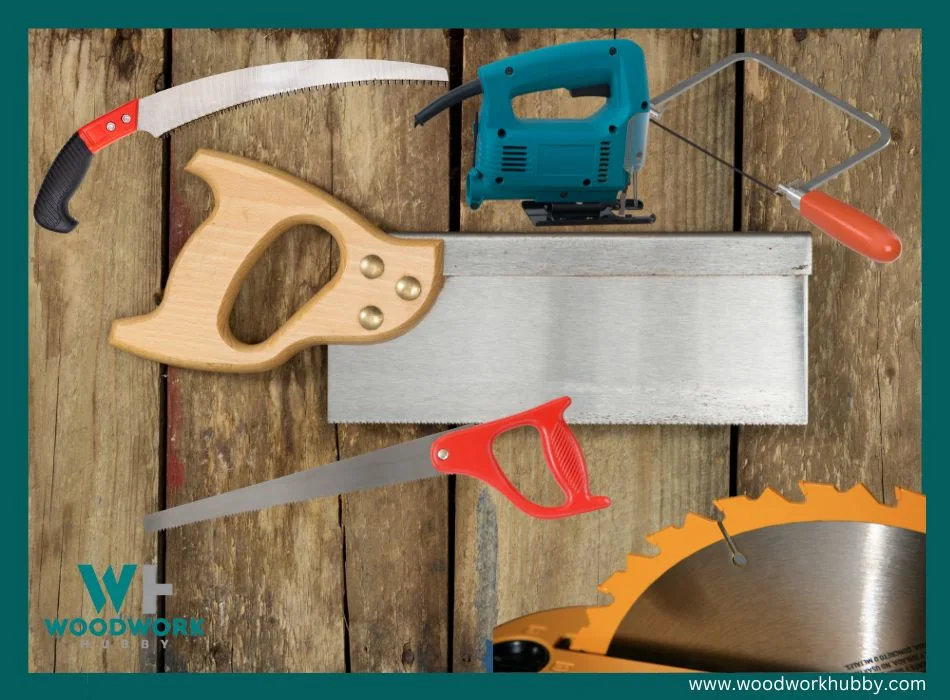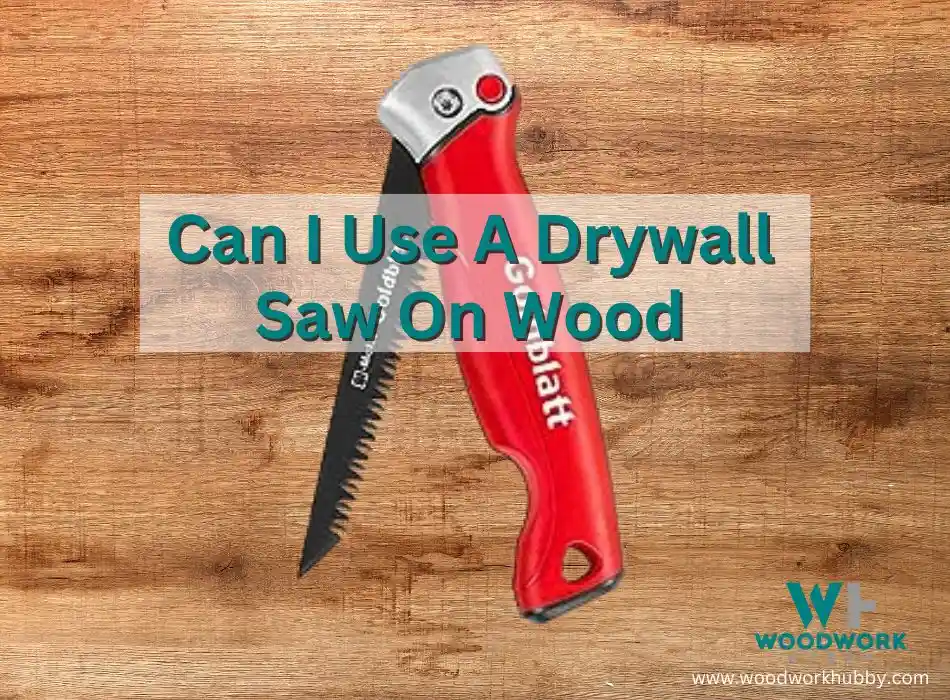Are you eyeing that drywall saw in your toolbox and wondering, “Can I use a drywall saw on wood?” Like many DIY enthusiasts and even professionals, this conundrum has made me scratch my head too.
Not only have I pondered this question, but I’ve gone the extra mile to unravel it by researching extensively on the topic. This informative guide will take you through whether or not drywall saws can be used on wood and provide insights into the limitations of doing so.
Key Takeaways
- A drywall saw can cut wood, but its effectiveness depends on the type and thickness of the wood.
- Compass saws are more suitable for cutting wood as they offer greater flexibility and precision.
- Using a drywall saw on thicker or denser wood may damage the blade and result in unsatisfactory cuts.
- It is important to choose the right tool for cutting wood, considering factors such as desired outcome, type of wood, and level of precision needed.
Can a Drywall Saw Cut Wood?
A drywall saw can cut wood depending on the saw and the thickness and type of wood.
Whilst you could use a drywall saw on wood in a pinch, I would not recommend it.
Video showing if you can cut wood with a sheetrock saw
Compass saws for wood
Compass saws are an excellent tool for woodwork. These versatile hand tools, also known as keyhole saws, have a thin blade that’s perfect for making precise cuts in softer woods. The pointed tip of the compass saw is especially useful for penetrating materials and cutting holes, often used in drywall but equally effective on wood.

But what sets this type apart from other options? It offers greater flexibility and can even handle non-ferrous metals and plastic, not just wood or drywall. However, if your project involves hardwood or needs very clean, precise cuts, you might want to consider a dedicated woodworking saw as a table saw instead.
Also, remember to keep your blade sharp – it makes all the difference in ensuring efficient cutting!
Differences between drywall saw and compass saw
I’m going to share with you the differences between a drywall saw and a compass saw. These two tools may seem similar but they serve different purposes and have unique features that set them apart.
| Drywall Saw | Compass Saw | |
|---|---|---|
| Primary Use | Designed primarily for cutting through drywall. | Specially made for cutting through wood. |
| Blade Design | Has a thick metal blade with coarse teeth for cutting through drywall. | Comes with a thin blade with fine teeth perfect for cutting wood. |
| Push or Pull | Typically a ‘push’ saw, cutting as it is pushed forward. | A ‘pull’ saw, it is more effective when pulled back towards the user. |
| Cutting Curve | Possibly challenging to cut curves due to its coarser teeth and thicker blade. | Excellent for cutting curves with its finer teeth and ‘pull’ design. |
| Optimal Usage | Optimal for making holes and cuts in drywall. | Optimal for precise and controlled cuts in wood. |
Remember, using the right tool for the right job will improve your efficiency and the quality of your work. It also prevents potential damage to your tools and the materials you’re working with. So, choose wisely!
Limitations of Using a Drywall Saw on Wood
Using a drywall saw on wood has its limitations, including potential damage to the saw blade, limited thickness and type of wood that can be cut, and other saw options that may be better suited for cutting wood.
Thickness and type of wood
Understanding the thickness and type of wood is critical before you start cutting. The hard truth is that drywall saws, or jab saws, are best employed for their initial purpose – slicing through dry-tall, typically composed of large rigid sheets.
However, these tools do have an extra-thick metal blade which allows them to also cut thin pieces of wood effectively. Yet, when faced with thicker sections of timber or denser types like hardwood, a drywall saw may not be your most efficient choice.

It could potentially result in damage to the blade and unsatisfactory cutting results. So it’s crucial to consider both the type and thickness of wood before deciding if your reliable drywall saw can handle the task at hand.
Potential Damage to the Saw Blade
Using a drywall saw on wood can potentially cause damage to the saw blade. Thicker sheets of wood are not compatible with a drywall saw, as they may seriously damage the teeth of the blade.
It is crucial to choose the appropriate blade for the task at hand to ensure optimal cutting performance and safety. Additionally, using a dull blade can result in tearing the wood instead of cutting it accurately, so it should be avoided for safety reasons.
Regularly sharpening the blades of power tools, such as saws, is essential for enhanced performance and safety. Prior to operating a saw, checking for appropriate blade rotation and setting the blade depth at the proper level is crucial to ensure safe operation.
Other Saw Options for Cutting Wood
When considering cutting wood, there are several other saw options available that may be more suitable for the task. Here are some alternatives to using a drywall saw on wood:
- Tenon Saw: This saw is specifically designed for woodworking and is used for making precise cuts, especially when creating joints or tenons.
- Crosscut Saw: Ideal for making straight cuts across the grain of the wood, this type of saw has larger teeth and can quickly cut through wood with minimal effort.
- Pruning Saw: If you need to cut branches or trim trees, a pruning saw is a great option. It has a curved blade and sharp teeth designed to tackle woody material effectively.
- Coping Saw: This versatile tool is excellent for intricate cutting tasks and making curved or irregular shapes in wood.
- Circular Saw: Often used in carpentry and construction, circular saws use a spinning blade that can make both straight and beveled cuts in various types of wood.
- Jigsaw: Perfect for cutting curves in wood, the jigsaw has a narrow blade that moves up and down rapidly. It’s an excellent choice when you need more precision or want to create intricate designs.
- Handheld Power Saws (e.g., reciprocating saws): These power tools can handle tough cuts in various materials, including wood. They provide fast and efficient cutting with different blades available depending on your specific needs.

Conclusion
In conclusion, a drywall saw can be used on wood depending on the type and thickness of the wood. While it may not be the most ideal option for cutting wood, it can still get the job done in certain situations.
However, when working with thicker or harder woods, other saw options such as compass saws or coping saws may provide better results. Always consider your specific needs and choose the right tool for the task at hand.
FAQs
1. Is it safe to use a drywall saw on wood?
While a drywall saw is specifically designed for cutting through drywall, it can also be used on thin wood materials. However, using a specific wood-cutting tool like a regular handsaw or circular saw would be more efficient and provide better results when working with wood.
2. Can I damage the drywall saw if I use it on wood?
Using a drywall saw on wood may cause the blade to dull more quickly since it is not designed for cutting through harder materials like solid wood. This could result in reduced performance and potentially damage the teeth of the blade over time.
3. What are the limitations of using a drywall saw on wood?
Drywall saws have finer teeth and are typically thinner compared to traditional woodworking tools, making them less effective when cutting through thicker or denser pieces of lumber. They may struggle with hardwoods or thick plywood, leading to jagged or uneven cuts.
4. Are there any safety precautions I should take when using a drywall saw on wood?
When using a drywall saw on wood, make sure you wear appropriate personal protective equipment such as safety glasses and gloves to prevent any injuries from potential splinters or flying debris. It’s also important to secure your workpiece properly before starting the cut to avoid accidents or slipping of the material during operation.





